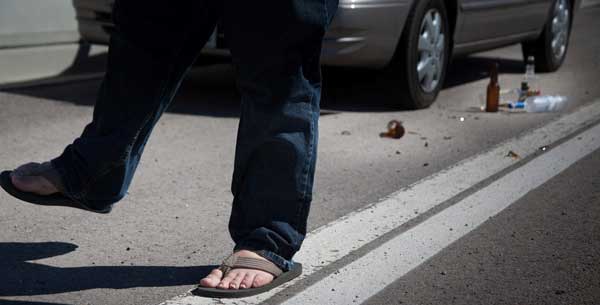DUI Enforcement
- Details
- Parent Category: Enforcement
- Traffic
- Hits: 11159
In This Page |
 |
About WCSO DUI Enforcement
The Traffic Section coordinates the Department’ DUI Enforcement efforts. 322 DUI arrests were made in 2008. Two Traffic Section Deputies are assigned to evening shifts during times that DUI arrests are routinely made. One deputy’s salary is funded through a grant that the Traffic Section applied for and received from the Illinois Department of Transportation.
Several squad cars are equipped with state-of-the-art video camera systems that are routinely used to videotape the actions of offenders arrested for DUI. Several of these video systems were awarded to the Sheriff’s Office because of our past DUI efforts.
Deputies also have access to 28 Portable Breath Testing Devices, to aid their efforts of conducting field sobriety tests to suspected DUI offenders. All department issued PBT’s are calibrated by a Traffic Section deputy every 91 days, in accordance with State guidelines.
Illinois Vehicle Code
Driving Under The Influence
Driving Under the Influence is defined as operating a motor vehicle while impaired by alcohol and / or drugs. Alcohol affects your overall ability to drive a vehicle. Alcohol slows your reaction time and inhibits your response to act in an emergency.
Alcohol affects your ability to concentrate and think clearly.
Nearly three out of ten Americans will be involved in alcohol related crashes in their lifetime.
Each year, approximately 8% of police reported motor vehicle crashes are alcohol-related and each year approximately 310,000 persons suffer injuries due to alcohol related crashes.
Blood Alcohol Concentration
According to the CDC
- In 2006, 13,470 people died in alcohol-impaired driving crashes, accounting for nearly one-third ( 32% ) of all traffic-related deaths in the United States.
- In 2007, over 1.4 million drivers were arrested for driving under the influence of alcohol or narcotics.4 That's less than one percent of the 159 million self-reported episodes of alcohol-impaired driving among U.S. adults each year.
- Drugs other than alcohol ( e.g., marijuana and cocaine ) are involved in about 18% of motor vehicle driver deaths. These other drugs are generally used in combination with alcohol.
- Half of the 306 child passengers ages 14 and younger who died in alcohol-related crashes in 2006 were riding with drivers who had a BAC level of .08 or higher.
- In 2006, 45 children age 14 years and younger who were killed as pedestrians or bicyclists were hit by alcohol-impaired drivers.
Drunk Driving and Young People
According to an AMA article dated Feb. 12th 2008
Approximately 11 million American youth under the age of 21 drink alcohol. Nearly half of them drink to excess, consuming five or more drinks in a row, one or more times in a two week period. Alcohol is the most frequently used drug by high school seniors, and its use is increasing. Boys usually try alcohol for the first time at just 11 years old, while the average age for American girls' first drink is 13. In short, our nation's youth are flirting with disaster.
Consider the facts:
- Underage drinking is a factor in nearly half of all teen automobile crashes, the leading cause of death among teenagers.
- Alcohol use contributes to youth suicides, homicides and fatal injuries – the leading cause of death among youth after auto crashes.
- In figures from the Insurance Institute for Highway Safety
- At all levels of blood alcohol concentration ( BAC ), the risk of involvement in a motor vehicle crash is greater for teens than for older drivers.
- In 2005, 23% of drivers ages 15 to 20 who died in motor vehicle crashes had a BAC of 0.08 g/dl or higher.
- In a national survey conducted in 2005, nearly three out of ten teens reported that, within the previous month, they had ridden with a driver who had been drinking alcohol. One in ten reported having driven after drinking alcohol within the same one-month period.
- In 2005, three out of four teen drivers killed in motor vehicle crashes after drinking and driving were not wearing a seat belt.
- In 2005, half of teen deaths from motor vehicle crashes occurred between 3 p.m. and midnight and 54% occurred on Friday, Saturday, or Sunday.

